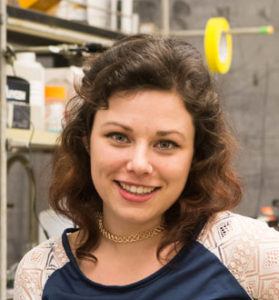Lindsay Cameron is a neuroscience researcher in the David Olson Lab at the University of California Davis. She received her B.S. in pharmacology at McGill University in 2013, then worked as a Research Assistant at the University of Waterloo. In 2014, she joined the Hwai-Jong Cheng laboratory at UC Davis to conduct neurogenesis research as a Junior Specialist. During that time, Cameron attended a presentation by Dr. David Olson that reignited her early passion for psychopharmacology. Thus began her doctorate pursuit in his lab. Cameron earned her Ph.D. in neuroscience from UC Davis in November 2021.
Cameron investigates potential treatment applications of psychedelics for neuropsychiatric disorders. Specifically, she researches these substances’ psychoplastogenic effects; in other words, their ability to stimulate new neuronal growth. This research emerges from the idea that depression is caused by disconnected, incommunicado neurons — a theory which challenges the primacy of the serotonin hypothesis of depression (and therefore challenges the default use of conventional antidepressants such as SSRIs and SNRIs).
Cameron coauthored the Olson Lab’s groundbreaking 2018 study that first identified the psychoplastogenic effects of psychedelics including DMT, ketamine, DOI, MDMA, LSD, and psilocin.1 The report was covered by Psychedelic Science Review. In a May 2019 UC Davis news article, Cameron explained,
The neurobiology of depression is directly linked to the neurobiology of plasticity…As psychedelics are among our most powerful tools for promoting neural plasticity, we can use them to elucidate the biochemical signaling pathways that give rise to plasticity, and in the process, gain insight into potential strategies for treating depression and related disorders.
One focus of Cameron’s work is determining whether the therapeutic effects of psychedelics require their hallucinogenic effects. She and her colleagues developed psychoplastogenic DMT analogs based on their study of the structure-activity relationship in substances such as ketamine and DMT.2 Led by Cameron, the Lab later developed tabernanthalog, a non-hallucinogenic yet psychoplastogenic ibogaine analog.3 The analog was developed for Delix Therapeutics (founded by David Olson), which is the proprietor of tabernanthalog.
She was also the lead author on multiple other Olson Lab papers, including an overview of DMT’s psychopharmacological value,4 two studies exploring impacts of DMT on anxiety and depression in rats,5,6 as well as a report of survey data from anonymous psychedelic microdosers.7 The report affirmed microdosing’s mood-elevating effects and underscored its potential risks, including metabolic disruption and neuronal atrophy. “People are saying anecdotally that it helps them with depression and anxiety. It’s increasing their sociability and their creativity at work,” Cameron explained. “They’re basically saying it’s enhancing cognitive function.” The study ranked among Psychedelic Science Review’s top 10 psychedelic studies of 2020.
Cameron has earned multiple awards and fellowships for her neuroscience research, which are listed on her Olson Lab bio page. More about Cameron’s research can be found on her ResearchGate profile.
